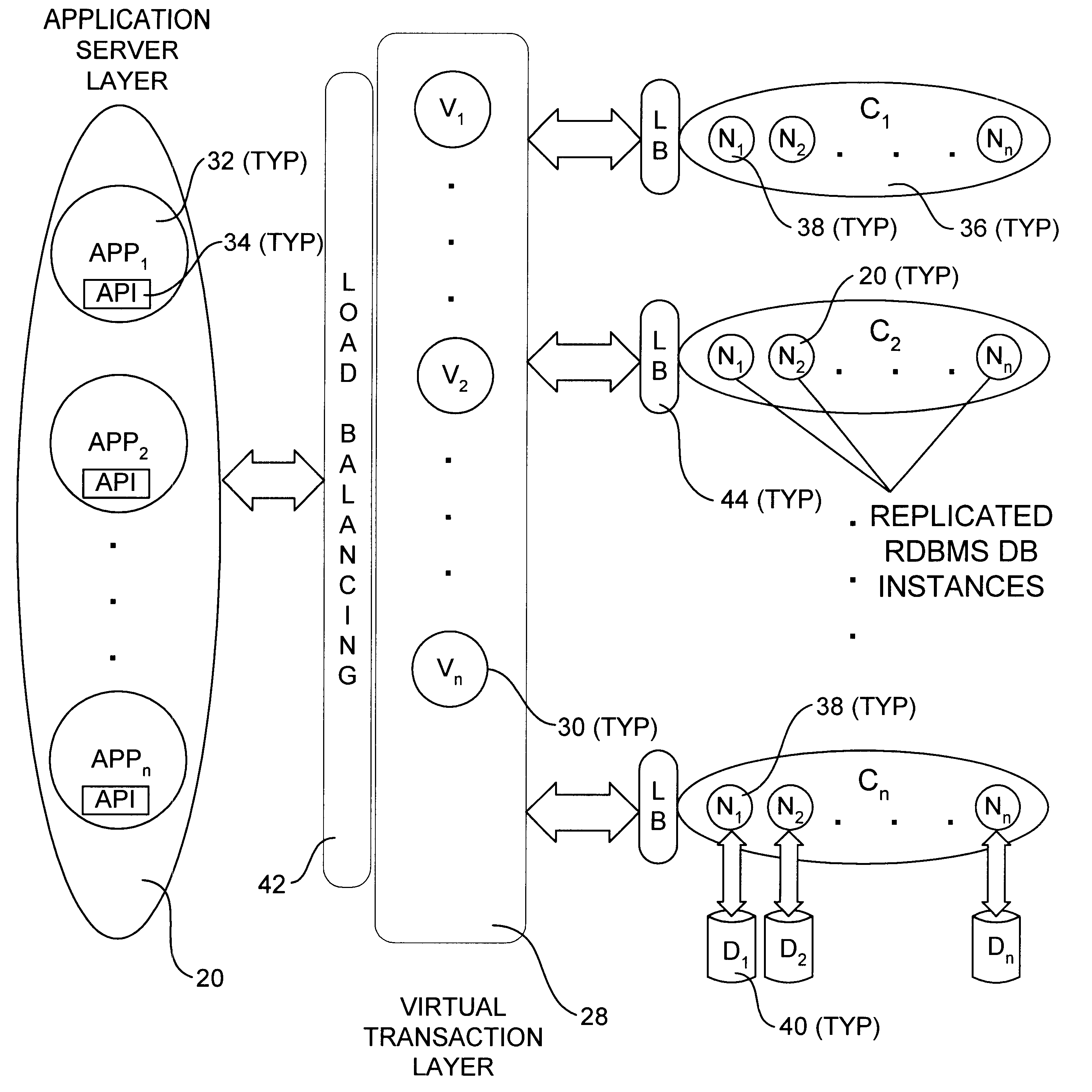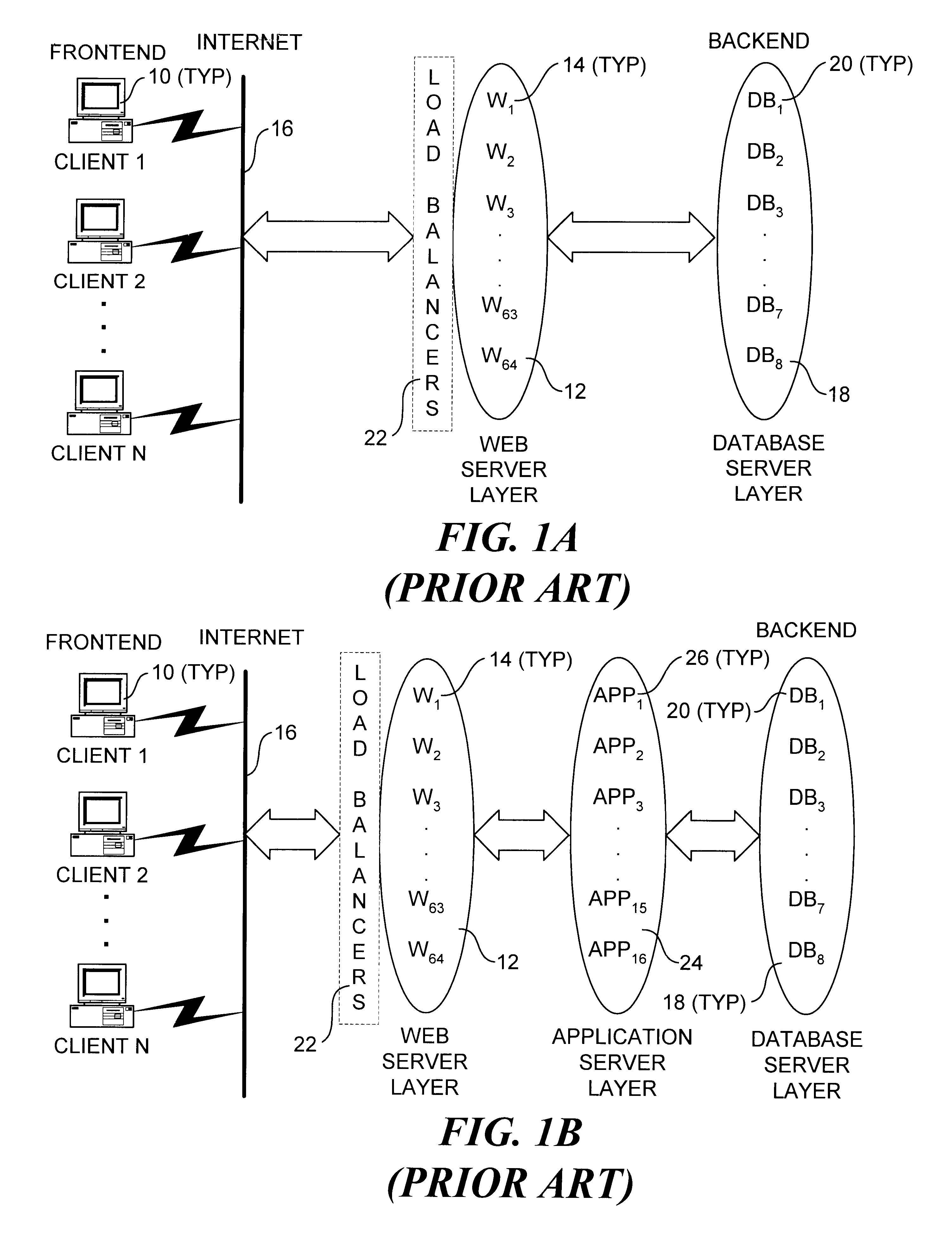Internet database system
a database system and database technology, applied in the field of large database, can solve the problems of large number of total users that can access the netstore, significant differences in data handling requirements of the internet domain, and current dbms products that are not well suited for internet applications
- Summary
- Abstract
- Description
- Claims
- Application Information
AI Technical Summary
Problems solved by technology
Method used
Image
Examples
Embodiment Construction
The following is a detailed example of operations performed on an exemplary database during typical activities, including initial configuration of the database and migration. The system configuration corresponds to the configuration shown in FIG. 3, with an initially empty database running on a system instance with the following configuration: two clusters, C.sub.1 and C.sub.2 ; four base machines M.sub.1, M.sub.2 (in cluster C.sub.1), M.sub.3, and M.sub.4 (in cluster C.sub.2), two virtual transaction layer machines V.sub.1 and V.sub.2, each running an update distributor, a single shepherd instance running on V.sub.1, and a single client application machine A.sub.1 running an instance of API 34.
Consider a database consisting of a single table "customer" with two fields, as shown in TABLE 2:
In the following discussion, this data will be added to an exemplary system, updated, retrieved, and deleted. The system will also be reconfigured while there is data in it.
The first task is to de...
PUM
 Login to View More
Login to View More Abstract
Description
Claims
Application Information
 Login to View More
Login to View More - R&D
- Intellectual Property
- Life Sciences
- Materials
- Tech Scout
- Unparalleled Data Quality
- Higher Quality Content
- 60% Fewer Hallucinations
Browse by: Latest US Patents, China's latest patents, Technical Efficacy Thesaurus, Application Domain, Technology Topic, Popular Technical Reports.
© 2025 PatSnap. All rights reserved.Legal|Privacy policy|Modern Slavery Act Transparency Statement|Sitemap|About US| Contact US: help@patsnap.com



